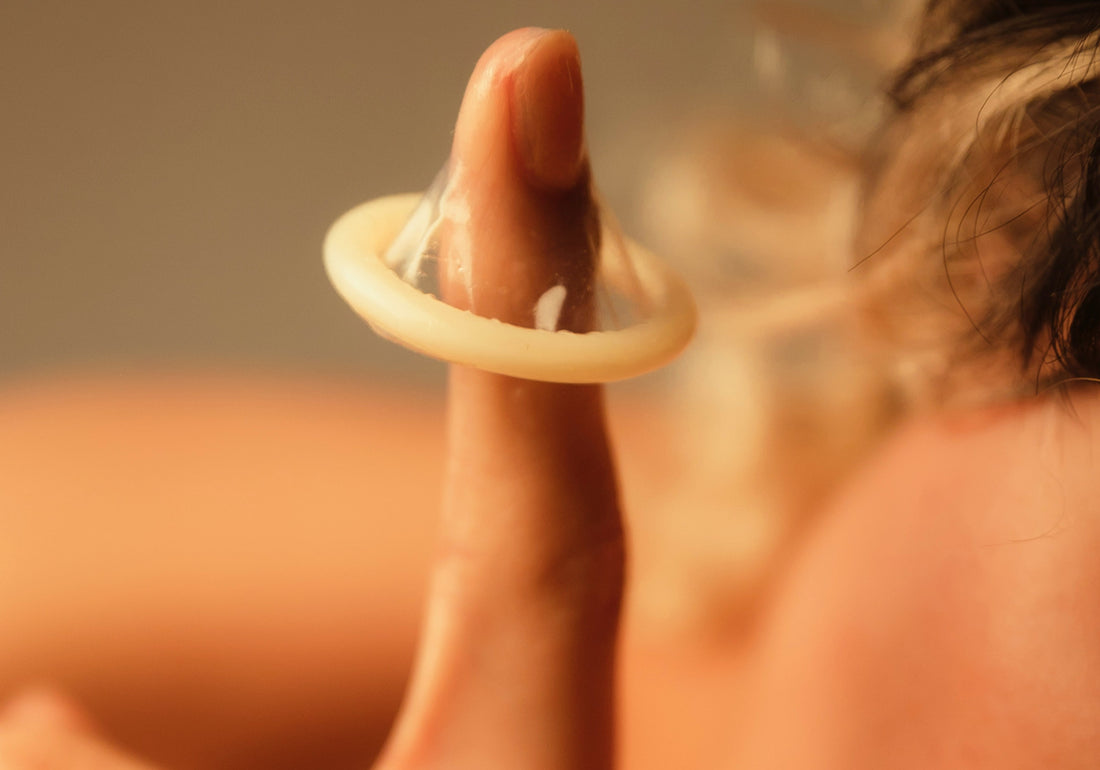
Hormone-Free Contraception: What’s Available and What to Consider
Hormone-free contraception is becoming increasingly interesting for many women. No wonder: more and more want to avoid synthetic hormones to prevent side effects, better feel their natural cycle, or simply choose more sustainable options. But what hormone-free contraception methods actually exist? And what should you consider when deciding on one? We give you an overview.
Why choose hormone-free contraception?
The pill, hormone implant, or hormonal IUD have been classic options for decades. But not every woman feels comfortable with them. Some experience mood swings, weight gain, or reduced libido. Others simply want to take more control over their own body.
Hormone-free contraception has a clear advantage: your body stays free from artificial hormones, and you can observe your natural cycle. This not only creates new body awareness but often also a better sense of your overall health.
Overview of hormone-free contraception methods
There are several ways to prevent pregnancy without hormones, ranging from mechanical methods to cycle-based contraception.
1. Condoms and Femidoms
Condoms are one of the most well-known hormone-free methods. They are affordable, widely available, and additionally protect against sexually transmitted infections (STIs). The femidom (female condom) is also an option if you want to take control yourself.
Good to know: Condoms are relatively safe when used correctly, with a Pearl Index between 2 and 12.
What is the Pearl Index? It indicates how effective a contraceptive method is, showing how many out of 100 women would become pregnant within a year despite using it. For example, a Pearl Index of 1 means 1 in 100 women gets pregnant. The lower the number, the more effective the method.
2. Copper IUD and Copper Coil
The copper IUD or copper coil is inserted into the uterus by a gynecologist. Copper prevents sperm from fertilizing an egg.
Advantages: You don’t have to think about contraception daily, and the effect lasts 3–10 years depending on the model.
Disadvantages: Periods may become heavier and more painful.
3. Diaphragm and Cervical Cap
The diaphragm and cervical cap are small cups inserted into the vagina before sex, covering the cervix. Used with contraceptive gel, they block sperm.
Note: They must be fitted correctly to maintain effectiveness.
4. Natural Family Planning (NFP)
With the symptothermal method (NFP), you observe your basal body temperature, cervical mucus, and sometimes the cervix itself. This helps identify fertile days, during which you can either avoid sex or use additional contraception.
Advantages: No side effects, more cycle awareness.
Disadvantages: Requires disciplined measuring and tracking. Effectiveness strongly depends on correct use.
5. Contraception computers and apps
Technical aids like cycle computers or contraception apps analyze your data and indicate your fertile days. They are convenient but do not replace the responsibility of correct use.
What to consider
Before choosing a hormone-free method, keep these points in mind:
-
Safety: Check the Pearl Index and see if the method fits your lifestyle.
-
Health: Some methods, like the copper IUD, may increase bleeding. Consult your gynecologist.
-
Practicality: Some women love the independence of an IUD, others prefer daily control like with NFP.
-
Costs: Condoms are cheap, whereas IUDs or contraception computers can be expensive upfront. Long-term, costs often balance out.
Conclusion: Focus on self-determination
Hormone-free contraception doesn’t mean less safety, just different priorities: more body awareness, more autonomy, and sometimes fewer side effects. Choose a method that fits you and your daily life. Consult your gynecologist if unsure, and remember: it’s about your body, your pleasure, and your freedom.
FAQs: Hormone-Free Contraception
Which hormone-free contraceptive methods are the safest?
The safest hormone-free contraceptive methods include the copper IUD, the copper coil, and sterilization. They have a low Pearl Index and offer long-term protection. If you also want protection against sexually transmitted infections, condoms are the only method that provides both contraception and STI protection.
Is hormone-free contraception as safe as the pill?
It depends on the method. A copper IUD is roughly as effective as the pill. Methods like NFP (Natural Family Planning) or the diaphragm can be reliable, but their effectiveness strongly depends on correct usage. It is important to choose a method that fits your daily life.
What are the benefits of contraception without hormones?
Hormone-free contraception allows your body to function without artificial hormones. Many women report a more stable cycle, improved mood, and increased libido. You also gain greater awareness of your natural cycle, which is a real plus for body consciousness.
What are the disadvantages of hormone-free contraception?
Depending on the method, there can be disadvantages. Copper IUDs may cause heavier and more painful periods. Condoms can tear if not used correctly. Methods like NFP require discipline and accuracy. The key is to select a method that fits your lifestyle.
Which hormone-free contraception methods are best for young women?
Condoms are particularly suitable for young women because they are easy to use and provide STI protection. For those seeking a long-term solution, a copper IUD may be worth considering. If you want to understand your cycle better, NFP is also an interesting option.
How much does hormone-free contraception cost?
Costs vary widely: condoms are inexpensive and immediately available, copper IUDs or coils cost several hundred francs but last several years, NFP is almost free if you only need a thermometer and a cycle app, and a contraception computer can be more expensive. In the long run, costs often balance out.
Is natural contraception (NFP) really reliable?
Yes, if applied correctly. The symptothermal method has a very low Pearl Index with perfect use and is considered safe. However, NFP requires discipline: you need to regularly measure your temperature and observe cervical mucus. For women who want to experience their cycle consciously, it is a real advantage, though it can be a bit demanding for others.
